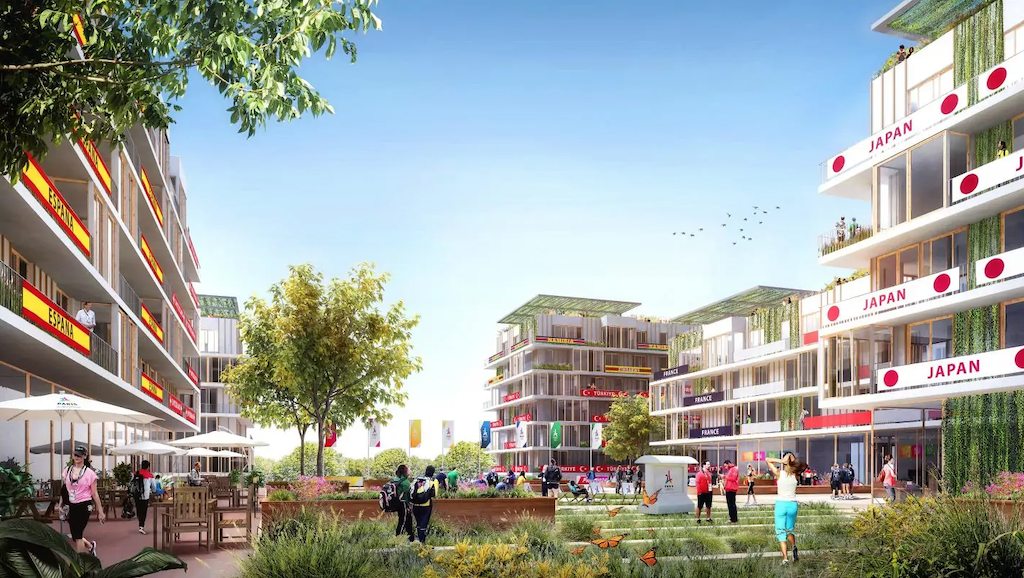Geothermal energy to cool the Olympic village for the planned 2024 Games in Paris, France

The organisers for the 2024 Olympic Games in Paris, France are planning to install aquifer based geothermal energy cooling systems for the Olympic Village, the accommodations for the international athletes.
Water at 14 degrees C captured at a depth of 60 meters will it be the urban solution of the future to withstand the heat waves that will affect the Ile-de-France more and more often and for a long time in the coming decades? ? In any case, this is one of the avenues chosen by the Olympic Works Delivery Company (Solideo), as part of the construction of the Paris 2024 Athletes’ Village.
“We worked from Météo France simulations in 2030 and 2050”
Straddling Saint-Ouen, Saint-Denis and L’Ile-Saint-Denis, the buildings intended to accommodate 15,000 competitors and their guides will notably be converted into offices (120,000 m2) and housing (2,200 for families and 980 specific accommodation for students, for example).
Solideo has signed an agreement with Smirec, the union for the production and distribution of heating and cooling in six towns in the Plaine Commune. The third partner is Engie Solutions, which has been entrusted with the public service delegation (except for La Courneuve). Work should begin at the end of the year, with the completion in the district and the Pleyel sector of eleven boreholes at a depth of 60 m: three will draw water from the Lutétien limestones, and eight others will be responsible for reinjecting it. at sufficient distances not to modify the 14 ° C of the water table.
These boreholes combined with the installation of “thermo-fridge-pumps” will allow heating and cooling, depending on the needs of the season. The interior temperature of the premises will be ensured through the floors.
This partial use of “renewable” geothermal energy will aim to limit individual air conditioning systems, which are particularly harmful, since they produce and reject heat outside to lower the thermometer inside buildings. The network will supply the offices, the hotel at the Pleyel tower or the pharaonic real estate project of the Lumières Pleyel. On the other hand, the occupants who will take over from the athletes, in the buildings converted into homes after the Olympics, will not benefit immediately.
“It will not happen immediately for the inhabitants”
“Each home will be technically ready to be connected to the cooling network,” explains Antoine du Souich. A promise of “more health security” in the face of climate change, this is what Solideo offers to future populations in the neighborhood. “But it will not happen immediately for the inhabitants, nuance the Smirec. Because to amortize the investment and the price of cooling by geothermal energy, it is necessary to have the usefulness of it a sufficient number of hours in the year. ”
Bioclimatic town planning
“We must start already by campaigning for bioclimatic town planning,” adds the elected official. A point that is also carried by the Solideo. To counter the phenomenon of heat islands, seven hectares of green spaces including a three-hectare park are planned. “Insufficient”, however, criticized residents during the public consultation.
The delivery company also relies on evapotranspiration and the design of buildings constructed perpendicular to the Seine to promote the circulation of the prevailing winds. The effectiveness of bioclimatic town planning against heatwave episodes will also be the subject of feedback from the neighborhood, according to Smirec.
Source: Le Parisien